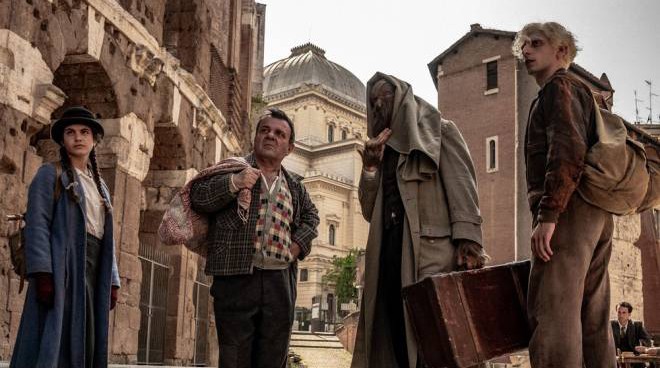What do we see when we look at the sky?
What do we see when we look at the silver screen?
Considering how Georgian cinema has delivered critically acclaimed films for two years in a row - 2020's Beginning, and now 2021's What do we see when we look in the sky? - it seems to be shaping its own new wave of cinema, very promising in its own way. This year's FIPRESCI International Critics' Award winner at the Berlinale is a film that confirms this tendency.
 |
The film starts on a somewhat magical realist tone, with the inciting incident being a curse bestowed upon a young couple right after they agree for their first rendez-vous: their physical appearance shall change and they shall forget their talent - the young man is a football player, the young woman a pharmacist student.
The resulting narrative further expands from this storyline, and director Alexandre Koberidze provides the viewer with an ever growing number of digressions. The story grows to become a tale of the Kutaisi, the city that provides a backdrop. Through a tedious and warm summer, the people (and the stray dogs) prepare to watch the new football world cup, the children reenact their favourite matches, a film crew seeks to complete the production of a feature. The digressions eventually take over the narration, which explains the reason behind such a considerable length of 150 minutes.
Nothing is however superfluous or out of space. For the elements that do not converge towards the main storyline, it is the final monologue of the voice-over narrator that provides a correlation: the main story is but one of the several tales that may be conjured by looking at the everyday life. Thus, the teens having fun and singing at the cafe, the father at the music school that awaits his daughter's violin lesson on the corridor, the children playing football and looking at the sky as their ball takes the wrong turn are all episodes of more untold stories.
The final blow that must have consacrated Koberidze's second feature with an universal critical acclaim was the pervasive metacinematic/metafictional discourse, palpable in every frame. In a scene the male protagonist turns on a projector that illuminates trees, benches, people and objects, to foreshadow the way the cinematic art reshapes reality. The ending of the film tear-jerkingly points this out: the viewer is made aware of the fictional nature of storytelling. The narrator implies that a suspension of disbelief has occured and that this magnificent film is not reality or its representation. What we have been seeing is just as ethereal, light hearted yet profound, as the clear sky.


Comments
Post a Comment